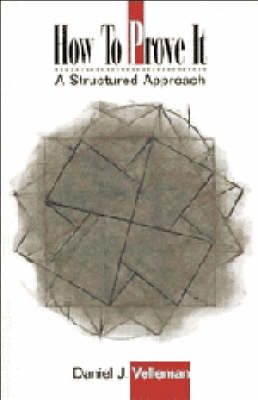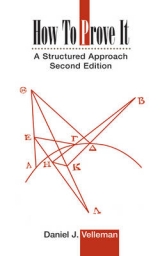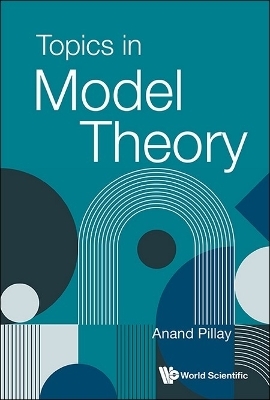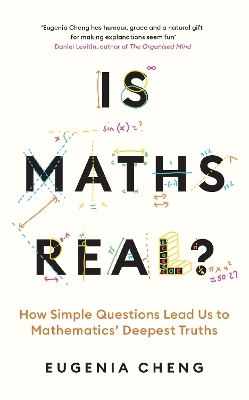
How to Prove It
A Structured Approach
Seiten
1994
Cambridge University Press (Verlag)
978-0-521-44116-2 (ISBN)
Cambridge University Press (Verlag)
978-0-521-44116-2 (ISBN)
- Titel erscheint in neuer Auflage
- Artikel merken
Zu diesem Artikel existiert eine Nachauflage
Many students have trouble the first time they take a mathematics course in which proofs play a significant role. This textbook prepares students to make the transition from solving problems to proving theorems, by teaching them the techniques needed to read and write proofs.
Many students have trouble the first time they take a mathematics course in which proofs play a significant role. This textbook will prepare students to make the transition from solving problems to proving theorems by teaching them the techniques needed to read and write proofs. The book begins with the basic concepts of logic and set theory, to familiarise students with the language of mathematics and how it is interpreted. These concepts are used as the basis for a step-by-step breakdown of the most important techniques used in constructing proofs. The author shows how complex proofs are built up from these smaller steps, using detailed 'scratchwork' sections to expose the machinery of proofs about the natural numbers, relations, functions and infinite sets. Numerous exercises give students the opportunity to construct their own proofs. No background beyond standard high school mathematics is assumed. This book will be useful to anyone interested in logic and proofs: computer scientists, philosophers, linguists, and of course mathematicians.
Many students have trouble the first time they take a mathematics course in which proofs play a significant role. This textbook will prepare students to make the transition from solving problems to proving theorems by teaching them the techniques needed to read and write proofs. The book begins with the basic concepts of logic and set theory, to familiarise students with the language of mathematics and how it is interpreted. These concepts are used as the basis for a step-by-step breakdown of the most important techniques used in constructing proofs. The author shows how complex proofs are built up from these smaller steps, using detailed 'scratchwork' sections to expose the machinery of proofs about the natural numbers, relations, functions and infinite sets. Numerous exercises give students the opportunity to construct their own proofs. No background beyond standard high school mathematics is assumed. This book will be useful to anyone interested in logic and proofs: computer scientists, philosophers, linguists, and of course mathematicians.
| Erscheint lt. Verlag | 25.11.1994 |
|---|---|
| Verlagsort | Cambridge |
| Sprache | englisch |
| Maße | 158 x 237 mm |
| Gewicht | 619 g |
| Themenwelt | Mathematik / Informatik ► Mathematik ► Logik / Mengenlehre |
| ISBN-10 | 0-521-44116-1 / 0521441161 |
| ISBN-13 | 978-0-521-44116-2 / 9780521441162 |
| Zustand | Neuware |
| Informationen gemäß Produktsicherheitsverordnung (GPSR) | |
| Haben Sie eine Frage zum Produkt? |
Mehr entdecken
aus dem Bereich
aus dem Bereich
what we have that machines don't
Buch | Softcover (2024)
Profile Books Ltd (Verlag)
CHF 19,15
Buch | Softcover (2024)
World Scientific Publishing Co Pte Ltd (Verlag)
CHF 43,60
how simple questions lead us to mathematics’ deepest truths
Buch | Softcover (2024)
Profile Books Ltd (Verlag)
CHF 19,15



